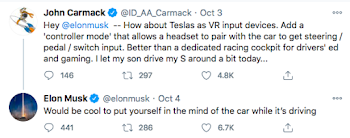Embracing the Groundswell: Elon Musk and Twitter
Embracing the Groundswell: Summary of chapters 9 and 10
In chapters 9 and 10 of Groundswell by Charlene Li and Josh Bernoff, they discuss the stages that come once you decide to talk and listen to the groundswell. This stage is embracing the groundswell, meaning not just listening to the feedback but utilizing that feedback to grow and innovate. They label this as "innovating with help from the customers," (2008, p. 182), meaning don't just innovate based on what you think is the next step for your company, rather what your customers think is the next step.
By making customers an "integral part of how you decide to innovate," you show them that you are there to help them create the product they need. Li and Bernoff provided multiple case studies to show the effects of embracing the groundswell. The story of salesforce.com came first, and truly helped me fully understand the meaning behind embracing the groundswell.
At Sales Force, the marketing and development team would constantly argue about the next steps of the company and what to innovate next. Rather than battling between marketing tactics and technology innovation, they decided to listen to what their customers were saying about the products. Then the roadblock hit: the responses and suggestions from customers were flooding in and it was nearly impossible to navigate what suggestions to use. They then decided to launch a site with Crispy News that allows customers to respond and add suggestions, then vote on those specific suggestions. Using this method, the most popular suggestions would immediately show up at the top of the feed therefore making it much easier for Sales Force to decide what to innovate first (2008, p. 184-185).Li and Bernoff then discuss how Twitter has helped business embrace the groundswell, and the power that Twitter has as a social media platform. Twitter, which allows users to respond, retweet, and share anything worth sharing, as become the "the center of a whole ecosystems of interactions," (2008, p. 197). They state that something important that comes with Twitter is once you start engaging, you cannot stop. Your audience will continuously expect the company to "listen and respond, not just broadcast," (2008, p. 201). Twitter is an essential tool to engage and embrace with the groundswell, and a prime example of this is Elon Musk, creator and owner of Tesla.
Elon Musk Embracing the Groundswell
Elon Musk, who created the battery-operated Tesla car, is a prime example of how company owners, regardless of the company, can use social media to engage with the groundswell. He shows how company owners can use Twitter to innovate and adapt based solely off of what their customers think. Below are screenshots that show how Musk has engaged with and embraced his followers to grow and adapt his business.
Elon Musk not only reads questions and responses that are tweeted to him from loyal followers of the brand, but he replies and shows his followers that he is actively listening and engaging with them. Li and Bernoff state that "it doesn't matter what kind of business you have, if you have customers they can always help you," (2008, p. 194) and I think Elon adequately demonstrates this. He doesn't have new products coming out every week, and his specialty is very unique, but he still engages with his audience and embraces the suggestions provided by his customer base.








Hi Lily,
ReplyDeleteGreat post! I see Elon Musk's posts all the time on twitter and it seems like he definitely does a good job in engaging with the groundswell online. He certainly knows how to market himself and how to stay relevant, obvious through his connection/friendships with celebrities such as Kanye West.
Hi Lily,
ReplyDeleteGreat sharing.
The company's product innovation is based on the needs of customers, not bindly. What's more, you use Musk as an example to illustrate how social media can be used as a place for customers and audiences' feedback, and interaction can improve customer's loyalty to the brand.
Thanks.